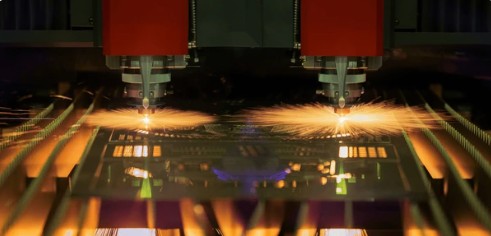Micro-Machining of Metal Parts: Challenges and Solutions on the Micro Scale
Micro-Machining of Metal Parts: Challenges and Solutions on the Micro Scale
Modern industry is moving toward miniaturization. From medical implants to aerospace sensors, the demand for processing metal parts with micron-level precision is growing rapidly. At the forefront of this movement is micro-machining — a high-precision technology where even the slightest deviation can affect the functionality of a product.
This article explores the main challenges of micro-machining metal components, the technologies currently in use, and how engineers ensure accuracy, stability, and quality control at the micro level.
What Is Micro-Machining of Metal Parts?
Micro-machining is a process that uses mechanical, laser, or electro-erosive energy to shape materials into elements ranging from a few micrometers to a few millimeters in size.
The main goal is to achieve high-precision shapes and surfaces with minimal tolerances and surface roughness. Such components are used in:
-
Microelectronics (contacts, connectors, sensor housings)
-
Medicine (micro-instruments, implants, catheters)
-
Watchmaking
-
Optical-mechanical systems and aerospace applications
Micro-machining differs from traditional machining not only in scale but also in the physics of the process — the material behavior, friction, heat transfer, and even the elasticity of the cutting edge manifest differently at the micro level.
Key Challenges in Micro-Machining
1. Precision and Stability Limits
When working at micron scales, even minor vibrations, temperature fluctuations, or micro-deformations of the tool become critical. For example, a temperature change of just 1°C can cause linear expansion of metal by several microns — comparable to the entire size of a part.
2. Tool Wear and Geometry
Cutting tools for micro-machining have edge radii under 1 µm and are subject to rapid wear due to high loads and low cutting speeds. Maintaining edge geometry is one of the most challenging aspects for process engineers.
3. Surface Quality
Even tiny traces of vibration, microcracks, or burrs can disrupt part functionality. For instance, in microfluidic channels, wall roughness directly affects flow laminarity.
4. Measurement and Control
Inspecting micro-machined parts is a challenge in itself. Optical systems and profilometers must provide nanometer accuracy without touching the surface — to avoid damaging the part.
Main Micro-Machining Technologies
1. Micro-Milling
A classical technique adapted for micro-scale work. It employs high-speed spindles (up to 100,000 rpm) and tools under 0.1 mm in diameter.
Modern 5-axis CNC machines achieve positioning accuracy down to ±0.5 µm.
Advantages: High flexibility, ability to process complex 3D surfaces.
Disadvantages: Rapid tool wear, vibration sensitivity, and rigid fixturing requirements.
2. Micro Electrical Discharge Machining (Micro EDM)
This method relies on controlled electrical discharges between an electrode and the workpiece. It is ideal for hard-to-machine alloys and hardened steels, producing holes as small as 10 µm and surface roughness under Ra 0.1 µm.
Pros: No mechanical contact, very high precision.
Cons: Lower productivity and the need for close monitoring of electrode wear.
3. Laser Micro-Machining
Uses a focused laser beam to locally heat, melt, or evaporate material.
This technology excels in micro-welding, micro-perforation, and metal marking.
Modern femtosecond lasers enable processing without thermal effects — crucial for brittle or thin structures.
4. Ion-Plasma and Electrochemical Micro-Machining
For ultra-precise surfaces where mechanical contact is undesirable, non-contact methods like plasma etching, electrochemical dissolution, or polishing are used.
These technologies are vital in optics and microelectronics.
Modern Solutions and Innovations
Nanocoatings and Tool Materials
To increase tool life, diamond-like (DLC), TiAlN, and CrN coatings are applied. These reduce friction and prevent chip adhesion.
Superhard materials such as polycrystalline diamond (PCD) and cubic boron nitride (CBN) are also increasingly used.
Additive-Hybrid Systems
New hybrid machines combine 3D printing and subsequent micro-machining in one setup, enabling the creation of microstructures impossible with conventional machining alone.
Intelligent Control and Artificial Intelligence
Modern CNC systems are equipped with sensors that monitor vibration, temperature, and tool wear in real time.
With AI-based predictive algorithms, systems can forecast tool failure and automatically adjust cutting parameters — a key to micro-scale process stability.
Automation and Micro-Robotics
In mass production, robotic cells play a growing role — positioning workpieces, changing tools, and inspecting parts using micro-cameras and 3D scanners.
Quality Control and Measurement
Micro-machining relies on:
-
Optical interferometers for surface topology;
-
Scanning electron microscopes (SEM) for microdefects;
-
Coordinate measuring machines (CMMs) with nanometric sensors;
-
Laser profilometers for roughness control below Ra 0.05 µm.
A strong trend is in-process non-contact inspection, allowing real-time correction and waste reduction.
Applications of Micro-Machining
-
Medicine: micro-needles, stents, implant components;
-
Microelectronics: sensor housings, heat-conductive substrates;
-
Watchmaking: miniature precision mechanisms;
-
Aerospace: micro-holes for turbine cooling systems;
-
Optics: microlenses, fiber channels.
Economic and Technological Outlook
Despite high equipment and tooling costs, micro-machining is among the fastest-growing machining sectors.
Analysts predict annual market growth of 8–10%, especially in medicine and electronics.
Key success factors include:
-
Positioning accuracy < 1 µm;
-
Automation and CAD/CAM integration;
-
Use of AI and predictive analytics;
-
Eco-friendly cooling and lubrication (MQL).
Conclusion
Micro-machining of metal parts is not just a smaller version of conventional machining — it is a distinct engineering discipline requiring deep knowledge of materials science, cutting physics, and control systems.
With the rise of laser and hybrid technologies, artificial intelligence, and nanomaterials, micro-machining is becoming increasingly precise, reliable, and accessible.
For forward-thinking manufacturers, investing in micro-scale capabilities means access to new markets and a strong competitive edge.

